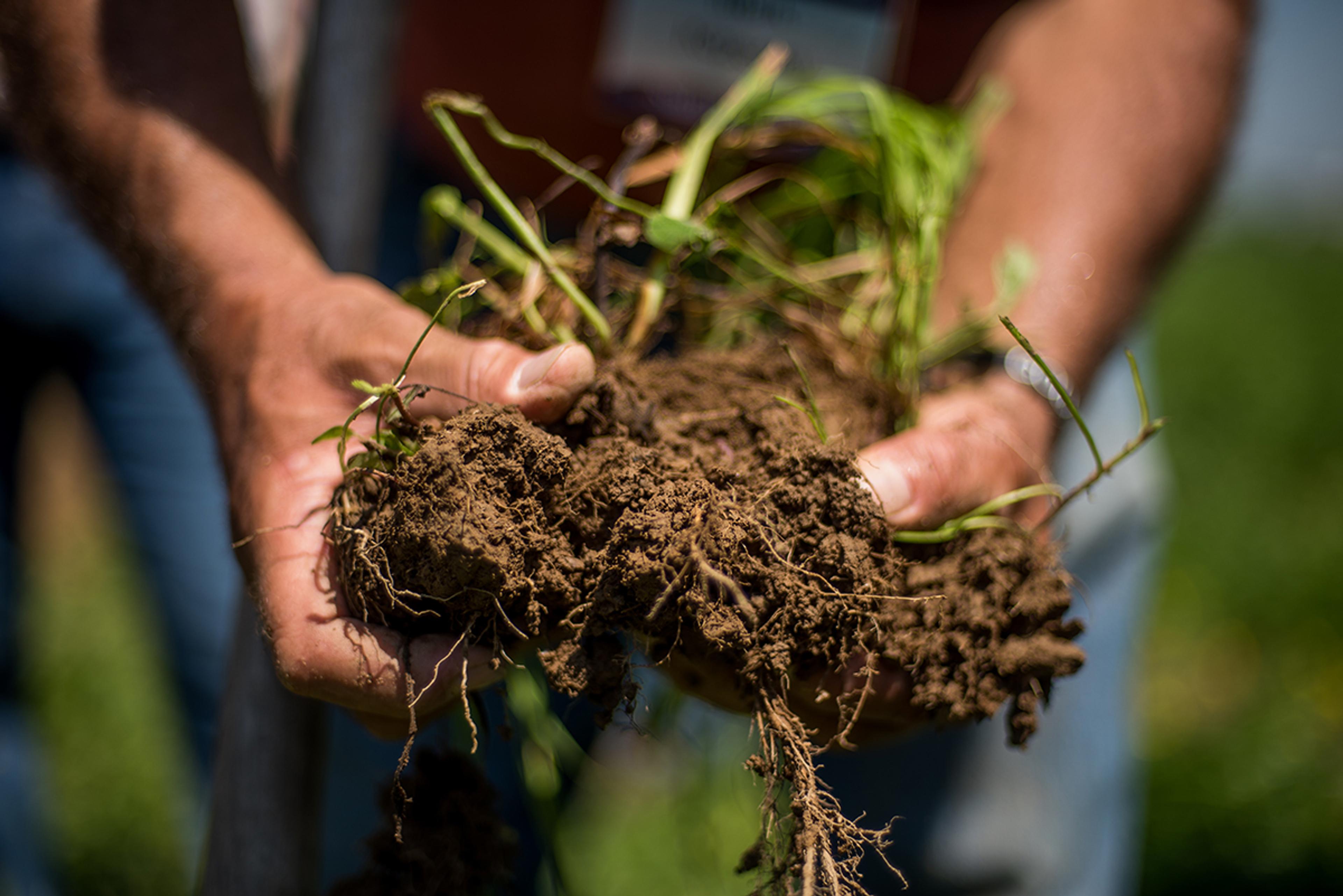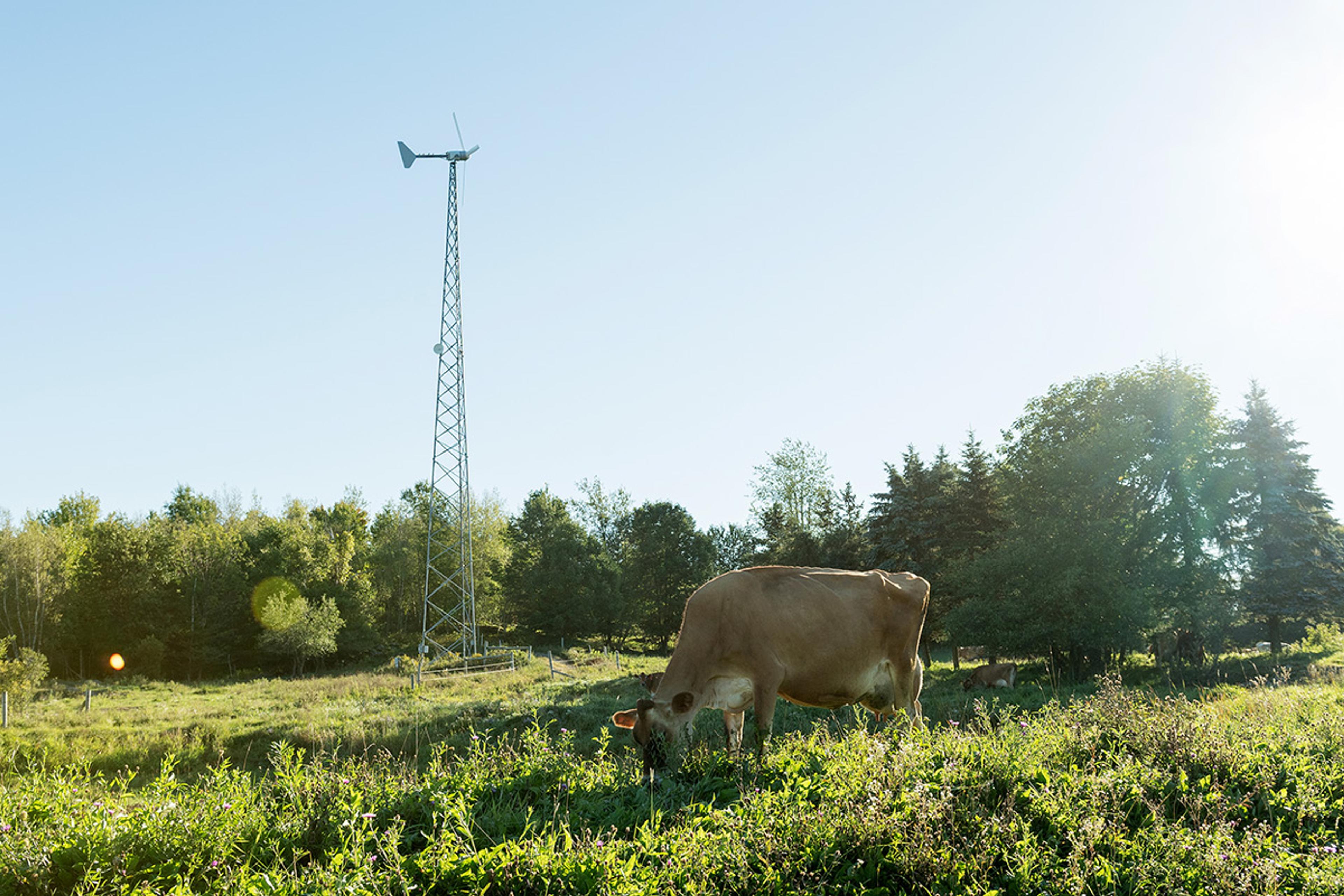
Earth
Organic Valley Farms Harness Nature’s Superpowers to Fight Climate Change
The act of eating can have a profound impact on the world around us. How we nourish ourselves and our families may yet determine the health of the planet we call home. As pioneers in organic farming, Organic Valley has led the way in moving agriculture toward more environmentally friendly practices. Now, we’re leading the regenerative organic farming movement with our commitment to taking action on climate change through pasture-based farming with big plans to deliver even more goodness in the years to come. One way we will do this is through Climate-Smart Farming, which is the act of growing and producing food in ways that not only decrease agriculture’s climate impact, but also improve the health of our soil, water, and all life-forms that depend on these systems—including us!
What are Climate-Smart Farms?
Organic Valley’s climate-smart farms are farms that have chosen to incorporate practices that reduce their impact on the planet:
- Cows enjoying pasture through managed intensive grazing improves soil organic matter, microbial diversity, and water infiltration.
- Cover crops replenish soil nutrients and prevent erosion.
- Crop rotations prevent depleting the soil.
- Compost applications on fields and pastures replenish nutrients.
- Not applying chemicals like herbicides, pesticides, and fossil-fuel-based fertilizers keeps a lot of carbon dioxide out of the atmosphere and improves biodiversity.
- Low- or no-till methods prevent erosion.
- Woody shrubs and trees, especially along waterways, store even more carbon, prevent erosion, and provide habitat for beneficial animals and insects.
- Energy efficiency and renewable energy like solar and wind reduce the use of fossil fuels on the farm.
These regenerative organic practices build soil health, increase the soil’s ability to store carbon, improve the water-holding capacity of fields and pastures, reduce the adverse effects of drought, and decrease fossil fuel consumption. When done right, greenhouse gas emissions are dramatically reduced and more carbon is kept out of the atmosphere and is instead stored beneficially in the plants and soil.

Sun-and Wind-Powered Farms
To be our best, we go to the source of it all: our farms. The goodness on your plate gets its start in the fields, pastures, and barns that make up our nearly 1,800 member farms. Beyond the strict USDA Organic standards, we continuously improve the whole farm ecosystem. With renewable energy systems on 200-plus farms—and more added each year—we are a leader in investing in the power of the sun and wind to energize our farms.
We don’t stop there! By helping our farmers make their facilities and equipment more energy efficient, we’re reducing our cooperative’s dependence on fossil fuels, ensuring that we collectively minimize our contribution to climate change. Financing these improvements can be challenging, so Organic Valley launched a new Powering the Good Loan Fund to provide the best loan terms for farmers seeking to make energy efficiency improvements or add renewable energy systems. In partnership with the Clean Energy Credit Union, the program is the first of its kind for both Organic Valley and CECU.
Leading in energy is just one of the many ways our farms are climate-smart farms.
"On-farm soil carbon sequestration can potentially sequester all of our current annual global greenhouse gas emissions."
- Rodale Institute
Regenerative Ag and Superhero Soil
Beyond energy, we turn to the one thing that holds the greatest potential to get us out of this climate mess: soil. Lucky for us, Organic Valley farms are already pretty darn good at the whole soil health thing.
Agriculture, especially regenerative organic agriculture, has a big role to play in lessening the effects of climate change because soil stores several times the amount of carbon as the atmosphere, acting as a natural “carbon sink.” According to the Rodale Institute, “On-farm soil carbon sequestration can potentially sequester all of our current annual global greenhouse gas emissions.”
Organic Valley farmers have been wielding soil’s superpowers for decades. Healthy soil makes it possible for our farmers to produce nutritious and tasty food in a way that’s good for our earth.
Moving up the farm ecosystem, these robust soils mean healthy, more vigorous pastures; the healthy food for cows means improved animal health; healthy animals mean excellent milk quality; and excellent organic milk means a stable, sustainable livelihood for hundreds of Organic Valley farmers. The ripple effects are incredible!

The Secret Element: Cows
Key to all of this are grazing animals, specifically cows. Cows have been getting an undue amount of bad press lately, often positioned as a climate villain. Cows are not the problem. The problem lies in how cows are cared for and managed, so it’s really a human problem.
Our cows are raised on pasture, in the goodness of the outdoors, doing what cows do best—grazing. When animals move across a pasture landscape, grazing but not overgrazing, aerating the soil with their hooves, and returning nutrients to the land through their waste, a little bit of magic happens that makes for some of the healthiest, most productive landscapes on earth. If one element is missing, the full potential of this type of grassland ecosystem cannot be achieved. Grazing replicates the myriad beneficial effects of the native herds that once roamed the planet’s fertile grasslands.

Climate-Smart Farms Bring It All to Life
This synergy of cows on pasture growing in healthy soils is evident on the Mahalko family dairy near the rural community of Gilman in north-central Wisconsin. Since the mid-1990s, Kevin Mahalko and his father, Ken, have intensively grazed their herd of 120 Holstein cows on 326 acres. “The sustainability goal on our farm is to use and replenish what the land and the animals give us without having to bring in outside inputs,” says Kevin.
Kevin is a member of Organic Valley’s Farmer Climate Task Force, and he understands the importance of his well-managed, organic grasslands pulling carbon from the atmosphere and storing it in the soil and plant roots.
“Increasing the diversity of our pasture plant species and intensively rotating our cows on pasture is providing huge benefits in terms of the pasture’s ability to capture and store carbon. We’re also seeing the co-benefits of increased pollinator habitat through plant species diversity. Our farm is now a haven for pollinators,” Kevin said.
The Mahalko family farm’s long history of managed grazing and pasture improvements has resulted in an almost 100% increase in soil organic matter, demonstrating the power of pasture-based regenerative farming systems to sequester carbon and replenish the land. All of the farm’s acreage that is not hardwood forest is dedicated to pasture. The farm’s managed hardwood forest provides additional carbon sequestration as well as biodiversity and wildlife habitat.
“The whole idea of being able to capture and sequester carbon is one thing we can do to mitigate climate change, but it also brings many benefits to our farm, our neighbors, and our communities,” Kevin says. “With healthy soil and pastures comes cleaner air, cleaner water, and good animal habitat. People actually want to physically be on our farm. The natural beauty that comes from a healthy farm ecosystem is a huge benefit for everyone.”
Four hours south of Kevin’s farm, Chris Wilson and his father, Keith, manage a dairy herd of 500 cows on 3,400 acres in Wisconsin’s Driftless region of southwest Wisconsin. The landscape here has been carved and shaped by water and fractured limestone rock. Farming here requires care and a gentle approach to protect ground and surface waters and prevent topsoil from eroding down the steep ridges into deep valleys.
“Climate-smart farming means working in harmony with an ecosystem to produce food for people. In order to do that, you have to be in tune with the ecosystem you are impacting—good and bad,” Chris says. “At the end of the day, it’s all important—the carbon cycle, clean water, clean air—these are the shared resources that we impact.”
The Wilsons’ climate-smart farm incorporates practices like managed intensive rotational grazing, and specifically “mob” grazing. This is the practice of moving cows to fresh pasture every day, sometimes twice per day. This style of grazing controls weeds, improves pasture plant diversity, increases soil fertility and soil carbon, and even improves animal health. “Our cows have access to more nutritious feed in the pasture grasses, and what is left behind gets trampled into the ground creating even more fertility for the soil, capturing even more carbon,” Chris said.
Other practices implemented on the Wilson farm that yield climate benefits include no-till perennial pasture systems, cover crops to control erosion, and crop rotations with a diverse mix of plant species. These practices not only build soil health and increase carbon sequestration, they reduce fossil fuel use because tractors spend less time in the fields—another climate win!
“If consumers care about these things, then they need to reward farmers who also care about these things by supporting farming systems that align with consumers’ values. Together, we’re supporting shared values,” says Chris.
Climate-smart farms like the Mahalkos’, the Wilsons’, and many others in our cooperative, are productive and financially viable family farms that are more resilient to climate change while actively reducing their carbon footprint. At Organic Valley, we see the ripple effects of the ways we farm. From soil to pasture to healthy animals and all the meaningful practices in between, it all leads to nutritious food for you, reduced carbon in the atmosphere, a stable livelihood for hundreds of farms, and of course, a planet that will sustain us well into the future.
Related Articles
- Tags:
- climate,
- environment,
- land stewardship & conservation,
- regenerative agriculture















